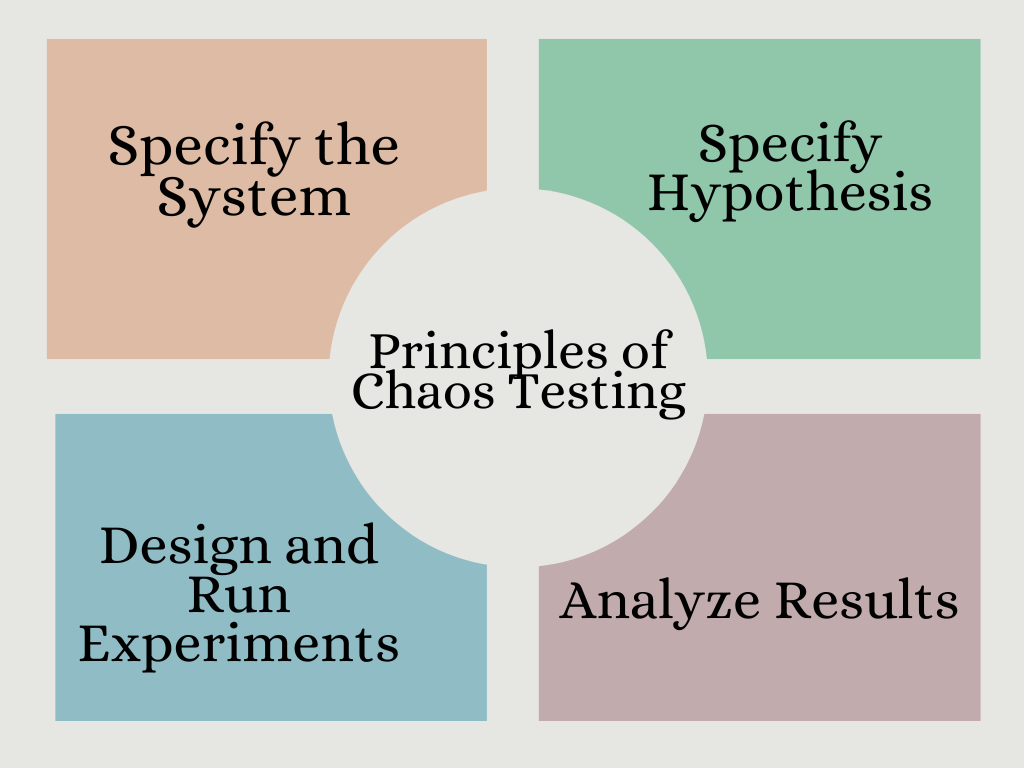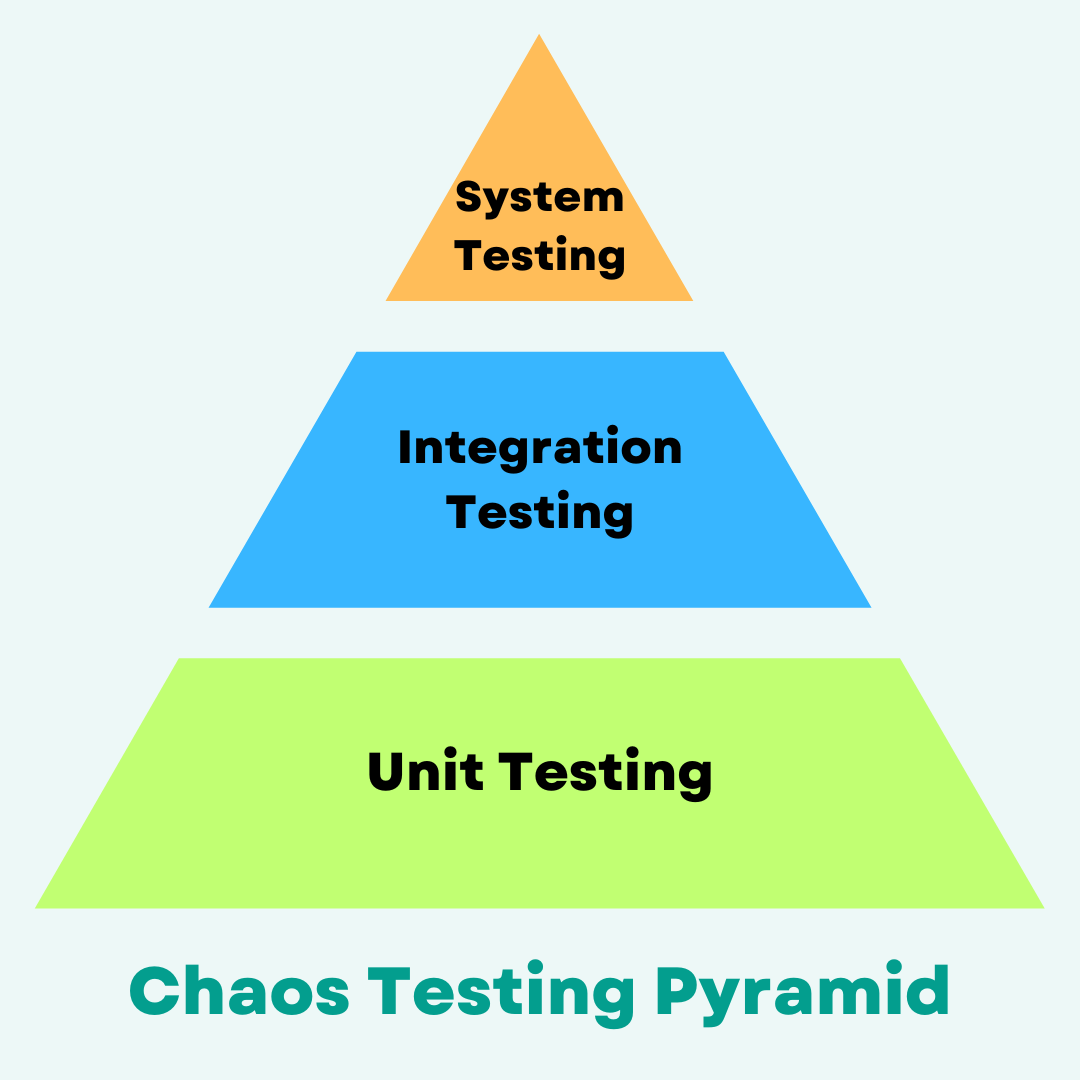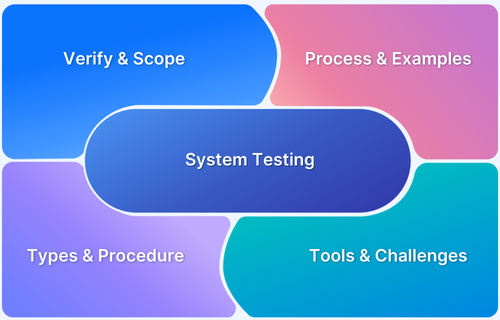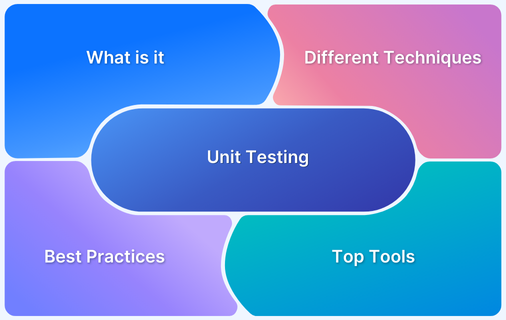Modern distributed systems can fail in unpredictable ways. Chaos testing helps uncover hidden weaknesses by deliberately introducing failures and observing how systems respond under stress.
Overview
What is Chaos Testing?
Chaos testing, also known as chaos engineering, is a proactive testing approach that simulates real-world system failures to evaluate how resilient applications are to unexpected disruptions. It helps teams identify vulnerabilities before they cause major outages in production.
Use Cases of Chaos Testing
- End-to-end microservices testing: Ensures services continue to function when dependent components fail.
- Cloud infrastructure testing: Verifies resilience across distributed cloud environments and auto-scaling systems.
- Network resilience: Tests how systems handle latency, packet loss, or partitioning.
- Database failover: Confirms applications recover properly when a database node crashes.
- Incident preparedness: Trains teams to respond efficiently to real outages.
Benefits of Chaos Testing
- Improved reliability: Identifies weak points early to prevent unplanned downtime.
- Better incident response: Prepares teams to handle real failures effectively.
- Enhanced application observability: Encourages building robust monitoring and alerting systems.
- Optimized architecture: Strengthens distributed systems by validating failover strategies.
- Business continuity: Ensures critical services remain available during disruptions.
How Does Chaos Testing Work?
- Define steady state: Establish baseline metrics for normal system behavior.
- Introduce controlled failures: Simulate disruptions like node crashes, latency spikes, or resource exhaustion.
- Observe system response: Measure deviations from the steady state and recovery time.
- Analyze and improve: Identify weak points, fix them, and repeat the experiment to validate improvements.
Key Aspects of Chaos Testing
- Resilience: The goal is to build robust and fault-tolerant systems that recover gracefully from disruptions.
- Proactive failure detection: Unlike traditional testing that targets predictable scenarios, chaos testing uncovers unexpected weaknesses through simulated failures.
- Controlled execution: Experiments are conducted in a monitored environment either staging or production with safeguards to minimize risk.
- Failure simulation: Typical disruptions include network latency, server crashes, database outages, and resource exhaustion.
This article explains how chaos testing strengthens system reliability, compares it with other testing methods, and explores its objectives, principles, tools, and best practices in depth.
What is Chaos Testing?
Chaos Testing is a trending DevOps technique that examines a software product or system’s resilience through unexpected and unpredictable events, actions, or failures.
It involves actively introducing errors into a system to evaluate its resilience to such unfavorable circumstances.
The overall purpose is to check the system’s behavior to improve user experience and performance. Through controlled tests, teams can assess and improve their systems’ robustness.
Read More: Guide to UI Performance Testing
Why Perform Chaos Testing?
Chaos testing helps teams evaluate how applications respond to unexpected disruptions such as server crashes, network delays, or resource exhaustion. It identifies weak points that traditional testing often misses and strengthens system resilience under real-world conditions.
Here are some key reasons to perform chaos testing:
- Uncover hidden dependencies: Reveals implicit service or component dependencies that may cause cascading failures during disruptions, allowing teams to decouple and isolate critical systems.
- Test resilience under real conditions: Simulates failures like latency spikes, memory leaks, or database unavailability, validating that fallback mechanisms and retry strategies function as intended.
- Validate observability and alerting: Ensures logs, metrics, and monitoring alerts correctly detect anomalies, enabling faster incident detection and accurate root cause analysis.
- Stress-test recovery procedures: Evaluates failover mechanisms, auto-scaling, and disaster recovery plans under realistic load and failure scenarios to ensure minimal downtime.
- Drive architecture improvements: Highlights bottlenecks or single points of failure, guiding infrastructure and application design changes for higher availability and reliability.
Use Cases and Examples of Chaos Testing
Chaos testing has become a critical practice for ensuring the reliability, resilience, and security of modern software systems. By intentionally introducing faults and disruptions into applications and infrastructure, organizations can identify weaknesses before they impact real users.
Here are some key use cases for performing chaos testing:
1. Testing Security and Vulnerabilities
Chaos testing enables development and security teams to proactively uncover potential vulnerabilities. By simulating attacks or unexpected system behaviors at different layers, such as APIs, databases, or network components, organizations can evaluate how well security measures hold up under stress.
This approach provides actionable insights into the effectiveness of existing protocols, highlights potential attack vectors, and guides improvements to reduce risk.
Read More: What is Black-Box Penetration Testing?
2. Ensuring E-Commerce Platform Resilience
High-traffic events, such as Black Friday or seasonal sales, can put immense strain on e-commerce platforms. Chaos testing helps simulate scenarios such as payment gateway failures, inventory system outages, or sudden traffic spikes.
By identifying these weak points in advance, organizations can implement mitigations to maintain seamless shopping experiences and avoid revenue loss during critical periods.
Also Read: How to Test an E-commerce Website
3. Improving Healthcare System Reliability
In healthcare, system failures can have severe consequences. Chaos testing can simulate outages in patient record retrieval, electronic health record systems, or medical device communication networks.
This allows organizations to assess how staff respond to failures, verify backup procedures, and ensure that critical services remain operational even under adverse conditions.
4. Cloud Infrastructure and Microservices Validation
Modern applications often rely on distributed architectures such as microservices or cloud-native systems. Chaos testing can simulate service failures, network latency, or resource exhaustion in these environments. This ensures that services degrade gracefully, auto-scaling policies function correctly, and inter-service dependencies do not lead to cascading failures.
5. Financial Services Stress Testing
Banking and financial systems require high availability and transaction integrity. Chaos testing can be combined with stress testing to simulate database crashes, network partitioning, or unexpected transaction loads.
This helps ensure that trading platforms, payment systems, and customer-facing applications remain reliable under stress while maintaining data consistency and compliance standards.
6. Telecommunication and Streaming Services Reliability
Telecom networks and streaming platforms must handle large volumes of concurrent users. Chaos testing can simulate network congestion, server outages, or CDN failures to verify system resilience. This allows service providers to prevent outages, maintain quality of service, and optimize resource allocation.
Read More: How to Automate Video Streaming Testing
Chaos Testing vs. Regular Testing
Here are the key differences between chaos testing and regular testing:
| Aspect | Chaos Testing | Regular Testing |
|---|---|---|
| Purpose | Chaos testing generally tests the system’s resilience under unexpected events. | Regular testing only verifies the correctness and doesn’t go beyond its scope. |
| Process Timing | It takes place only after the system is completed. | It usually takes place throughout the project’s building or compiling process. |
| Testing Coverage | It covers a wide range of testing with configurations, behaviors, etc. | It completely excludes the testing of various configurations, outages, behaviors, or any other issues by a third party. |
| Interruptions | In chaos testing, the system can introduce any interruption to see how it reacts. | This type of testing requires fixing a disabled system based on end-user negative responses. |
Chaos Testing vs Load Testing
Chaos testing and load testing may seem similar, but they serve different purposes. Here are the major differences between the two types of testing.
| Chaos Testing | Load Testing | |
|---|---|---|
| Purpose | Tests system resilience by introducing unexpected failures | Evaluate system performance under expected or peak loads |
| Focus | Stability, fault tolerance, and recovery | Response time, throughput, and scalability |
| Approach | Injects random failures like network latency, service outages, etc. | Simulates a large number of users or transactions to assess capacity of the system |
| Environment | Carried out in production or production-like setups | Carried out in staging or pre-production. |
| Outcome | Improve self-healing and failover mechanisms. | Performance optimization by detecting system limits |
How to Perform Chaos Testing?
Chaos testing is ideal for larger or complex systems, offering faster response times and reduced downtime. It’s particularly effective for cloud-based systems, making it easier to implement.
Some of the essential steps required for performing chaos testing include:
- Hypothesis Development: Begin by clearly defining the scope and objectives of your chaos testing initiative. Identify the specific unexpected events or scenarios under which the systems will be evaluated to gain insights into their behavior.
- Safe Experiment Designing: Based on the identified scenarios, create chaos test cases. Prioritize security to ensure that the experiment is carefully planned to have successful execution and yield meaningful results.
- Simulate Failures: Inject controlled disruptions like network delays, server crashes, etc. to check how the system responds to unpredicted scenarios.
- Execution of the Experiment: Experiment within a controlled environment, closely monitoring the system’s behavior throughout the process. It’s important to note down all the details during the execution.
- Analysis: Utilize the documented observations and results to pinpoint weaknesses or vulnerabilities within the system.
- Iterative Testing: Once improvements are made, retest the system under the same scenarios until it proves stable and resilient. This iterative process continues until the hypothesis is validated and the system performs reliably under various conditions.
What are the Principles of Chaos Testing?
The core principles of chaos testing focus on understanding the normal behavior of a system, simulating failures, observing responses, analyzing them, and improving it based on insights.
4 main principles associated with chaos testing:
- Specify the System
- Specify Hypothesis
- Design and Run Experiments
- Analyze Results
Specify the System
The first principle of chaos testing defines the system as a steady state, which includes expected performance metrics like response times, error rates, and output under normal conditions.
Specify Hypothesis
Create a hypothesis on the system’s expected behavior during disruptions to guide the team’s learning and predict outcomes easily.
Design and Run Experiments
It involves analyzing failures like server crashes or resource constraints in a controlled environment to observe the system’s reaction and ensure clear recovery paths.
Analyze Results
After chaos experiments, analyze the data to evaluate system performance during disruptions. Documenting findings helps identify areas for improvement and strengthen system resilience.
Different Types of Experiments in Chaos Engineering
There are three types of experiments in chaos engineering, namely:
1. Automating Faults
Many organizations use reliability engineering to address issues during the system’s reliability assessments. This form of automation assists QA teams in evaluating which automated solutions are practical and which functions may need backup components to ensure continued operation.
2. Injecting Failures
In chaos engineering, introducing elements that trigger unexpected behavior in software is essential. This type of experimentation allows engineers to identify vulnerable or weak components within the software, ensuring that the system remains operational even during component failures.
3. Dependency Testing
Chaos engineers may find unexpected challenges when relying on ideal scenarios, underscoring the need to test hidden dependencies among microservices, databases, and downstream services to identify failure points during and after production.
What is a Chaos Testing Pyramid?
The Chaos Testing Pyramid is a structured framework designed to guide chaos testing implementation across different system complexity levels.
- Unit Testing: Focuses on individual components, testing their behavior under failure conditions.
- Integration Testing: Examines interactions between components, ensuring smooth collaboration despite disruptions.
- System Testing: Simulates real-world chaotic scenarios to evaluate the entire system’s resilience.
Tools and Frameworks for Chaos Testing
Here are the popular tools and frameworks for chaos testing:
- Chaos Monkey: Chaos Monkey is a popular chaos engineering tool developed Netflix. The main purpose of the tool is to intentionally disrupt the system to validate the resilience and recovery capabilities in real-world failure conditions. Netflix also created a similar suite of tools, like Chaos Gorilla, to simulate the failure of an entire AWS availability zone, Latency Monkey to simulate network delays and slow responses and more.
- Gremlin: Gremlin is a well-known enterprise-grade chaos engineering tool that provides options for controlled experiments like CPU spikes, latency, packet loss, and server shutdowns via its intuitive UI and API.
- Litmus Chaos: Litmus Chaos is an open-source chaos engineering framework for Kubernetes environements. Teams can inject faults into cloud-native apps via this tool to test resilience.
- Pumba: Pumba is a chaos testing tool built mainly for Docker environemnts. The tool can simulate network delays, packet loss, container termination etc.
- Chaos Toolkit: This open-source, extensible framework lets teams automate chaos experiments. The toolkit stresses defining experiments as code to drive repeatability and transparency.
Why Use BrowserStack for Chaos Testing?
Chaos testing requires validating system resilience across real user environments, not just controlled test setups. Applications that pass chaos experiments in staging can still fail in production when exposed to actual browser variations, device configurations, and network conditions.
BrowserStack Load Testing tool enables teams to run chaos testing experiments on real devices and browsers, providing accurate insights into how systems behave under disruption in genuine user conditions.
Key advantages of using BrowserStack for chaos testing:
- Test on real devices and browsers: Execute chaos experiments across over 3,500 real mobile and desktop browsers without managing physical device labs or emulators. Validate resilience in actual environments where users operate.
- Zero infrastructure setup: Access a cloud-based real device infrastructure instantly. No provisioning, configuration, or maintenance required. Focus on designing and running experiments instead of managing test environments.
- Run tests at scale: Execute multiple chaos experiments in parallel across different devices, browsers, and operating systems simultaneously. Reduce testing time while increasing coverage of potential failure scenarios.
- Integrate with CI/CD pipelines: Automate chaos testing within your deployment workflow. Trigger experiments on every build to catch resilience issues before production deployment.
- Secure testing environment: Run disruptive experiments in a SOC2 Type 2 compliant environment that isolates test traffic from production systems while maintaining realistic conditions.
Best Practices of Chaos Testing
Some of the best practices of chaos testing are:
- Clearly define the objectives and goals for chaos tests to establish a baseline of stable system behavior.
- Ensure tests closely follow real-world use cases to validate system quality.
- Follow the Chaos Testing Pyramid by conducting controlled unit tests to evaluate the impact on individual components.
- Create a detailed hypothesis to understand expected outcomes and conduct tests repeatedly until confirmed.
- Apply the Chaos Testing Pyramid to detect the major/minor issues within the system.
- Document all experimental data for in-depth analysis of system behavior under different conditions.
Limitations of Chaos Testing
Some of the limitations of chaos testing include:
- Modern software architectures are often complicated and distributed, making it challenging to predict how introducing chaos will affect various components and their interactions.
- Setting up and conducting chaos tests can be costly and time-consuming, requiring significant resources, tools, and expertise to execute effectively.
- Chaos tests may not always yield predictable results, leading to unexpected behaviors that are hard to interpret or analyze.
- Ensuring that chaos experiments do not cause excessive damage requires careful planning and execution, as exceeding the blast radius can lead to significant issues
Conclusion
Overall, chaos testing is an important practice for modern software development, enabling organizations to build resilient systems capable of handling unexpected disruptions.
With this testing approach, teams can easily identify vulnerabilities, improve reliability, and ultimately deliver the best user experiences.
The integration of chaos testing within DevOps practices makes it a better strategy for maintaining high availability and performance in a technically sound environment.
FAQs
1. What is Chaos Monkey Testing?
Netflix uses the Chaos Monkey testing approach to randomly terminate instances within a distributed system, simulating unexpected failures. The primary goal of this testing method is to validate the system’s fault tolerance and ensure that it can maintain stability and performance even when individual components fail unexpectedly.
2. Where is chaos testing most useful?
Chaos testing is most useful in environments where system resilience is critical, such as cloud-based applications, microservices architectures, and large-scale distributed systems. It helps them to identify all the major vulnerabilities or issues before they lead to significant outages or disruptions.
3. Can Chaos Testing Prevent Every Outage?
No, chaos testing cannot prevent every outage. Its goal is to identify weaknesses and improve system resilience by simulating failures, but it cannot account for every possible scenario. It significantly reduces risk and helps teams prepare for unexpected incidents.
4. Can Chaos Testing Be Performed in a Production Environment?
Yes, chaos testing can be performed in production, but it requires careful planning and safeguards. Running controlled experiments in production helps observe real-world system behavior, but it is essential to limit the impact on users and critical services.
5. Can Chaos Testing Be Automated?
Yes, chaos testing can be automated using specialized tools and frameworks. Automation allows organizations to run regular tests, simulate failures consistently, and integrate chaos experiments into CI/CD pipelines, ensuring continuous evaluation of system resilience.









